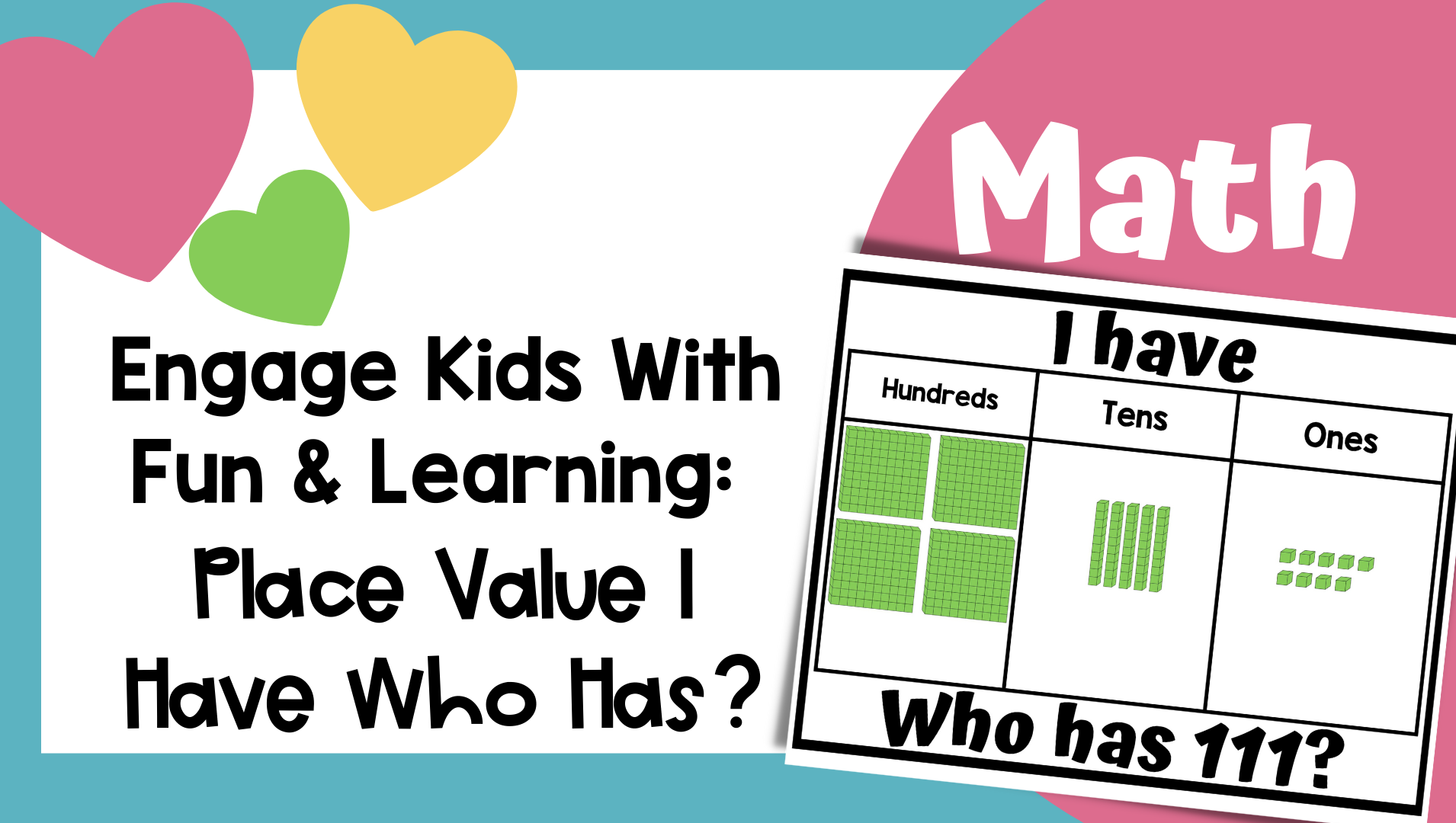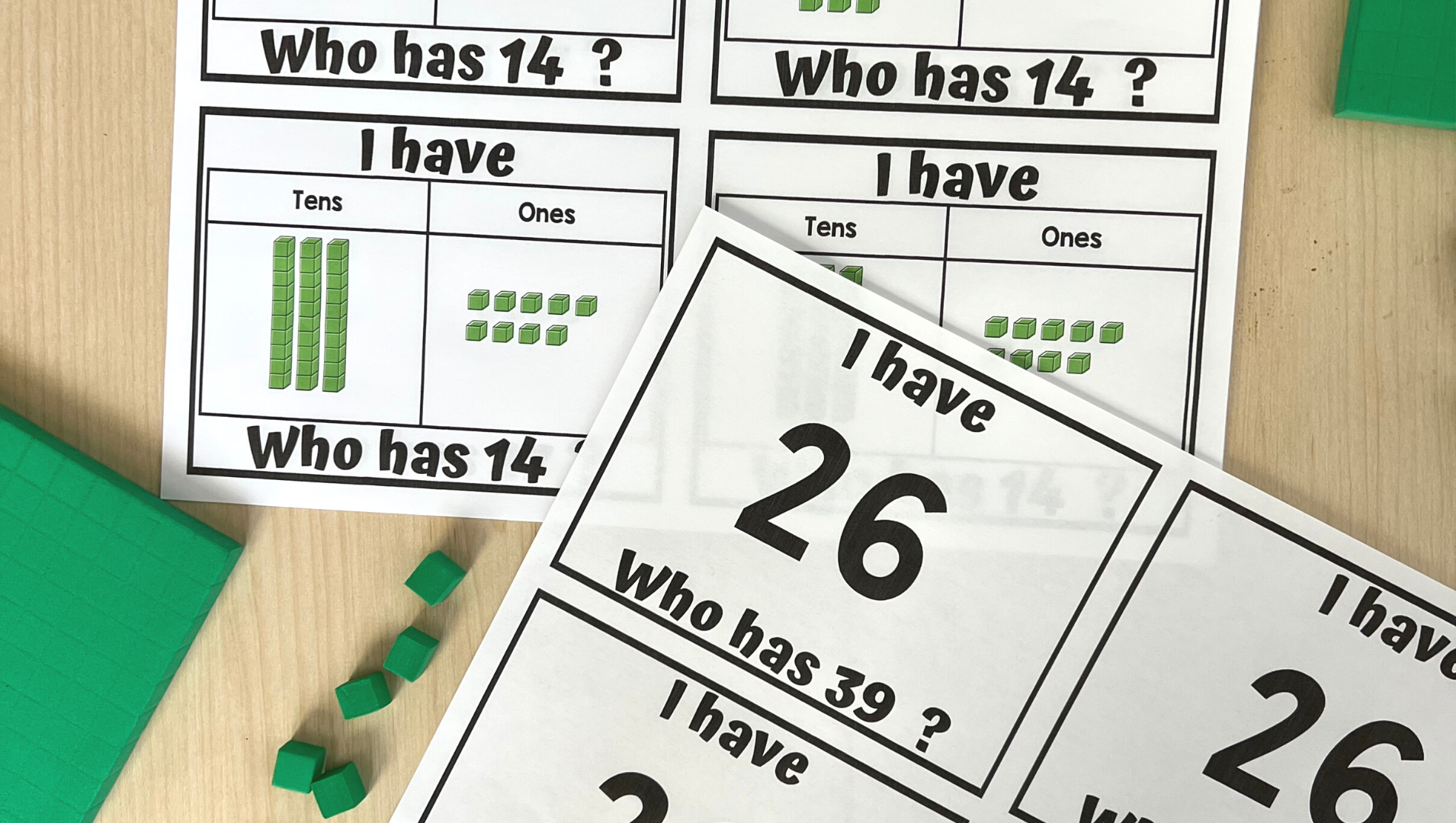Engage Kids with Fun And Learning: Place Value I Have Who Has Game
Nothing beats learning the place value of the digits through play!
Place Value I Have Who Has Game is an excellent way to get 2nd graders engaged with fun and educational whole numbers, larger numbers, and a focus on the ones tens, hundreds, and thousands than this fun game. This interactive game encourages students to practice place value skills while having a blast. This game is perfect for the classroom or in small groups. You will love watching your kids grow confident as they master this important math concept! So what are you waiting for?
Fun & Learning
Introducing a fun learning game for kids that will keep their attention – the Place Value I Have Who Has Game! This exciting new game will stimulate student's minds as they learn the all-important concept of the place value system while having a great time with friends.
This game is designed to engage students actively in learning while allowing them to use their skills in working with whole numbers in the ones place, tens place, hundreds place, and thousands place. With this game, children can explore and understand place values like never before; it’s not only educational but also incredibly fun! Whether played in a small group or as a whole class, this game will surely be a hit in 2nd grade.
What is Place Value?
If you have been following along for the last few weeks, you may have noticed that I've been talking about place value and the place value of each digit quite a lot! I spoke about Place Value: Math is Fun: 3 Games to Teach Place Value in the Classroom, and Place Value is Super Fun With Tic-Tac-Toe for 2nd Graders. So be sure to check out those blog posts for more details on the correct places for numbers.
Let's get down to what place value is for kids.
Place value is a mathematical concept that many of us may remember from elementary school. It is the idea that each digit in a number has its own correct place or position of a digit, and that this place determines the value of the digit.
This is an important part of any math lesson, as it helps children to understand not just numbers but also their relationship with one another. Understanding the value of each number also allows students to understand the different values of the numbers and can help children recognize the bigger number in a set of 2-digit numbers or 3-digit numbers.
In second grade, we tend to review two-digit numbers and move on to a large number.
When students understand the face value of a digit and have a solid grasp of the value of a given number, they can better understand complex addition and subtraction with regrouping. Place value understanding helps tremendously.
The I Have Who Has Game
The I Have Who Has Game is an educational card game perfect for teaching students of all ages the basics of place value. The game aims to help players recognize the correct places or positional value of a digit in a number. With this interactive and fun method, children can become accustomed to understanding how digits influence their respective numbers - without losing interest!
The I Have Who Has Game combines learning with entertainment. Players must move through each round with strategic thinking and quick wit. Players begin with different cards - each card has a number written on it corresponding to its place in the sequence, or it may contain base-ten blocks with an orange rod, orange cube, or even orange squares. As each player reads off their card, they have to identify which player holds the next card in order; this continues until everyone has had a chance to read aloud from their cards, then a new sequence begins! Kids search for the target number when a number is revealed.
Benefits of This Game
When learning and understanding digit value in mathematics, the adage practice makes perfect is particularly pertinent. Introducing a fun activity like I have who has place value can be an effective way to help children learn and internalize this critical concept of positional values.
The game involves each student receiving a card with a number written on it; they must then calculate its correct placement within the greater range of numbers being focused on. For example, if the teacher wants students to focus on hundreds and thousands, those playing the game must identify whether their number is in the hundreds or thousands range and find its exact slot. This helps children understand not only what each digit represents but also the position of each digit when compared to others.
How to Play
Whole Class Play:
Pass out all the cards in the set to students.
All cards must be passed out for the game to work. If you have too few students, give a few students two cards. If you have too many students, partner up with several students. You can also partner students up with more supportive students if they need more help.
Have the student who has the card that says START read the “Who has _____?’ question. (For example, the student’s card may say, Who has 26+5?)
The student with the answer at the top of his/her card reads the answer. Next, he or she reads the Who has? the problem at the bottom of the card.
The person who has the answer for that card reads the answer to the problem, then reads the Who has a problem at the bottom of his/her card.
This goes on until the class gets to the card that says END.
Variations/Alternatives
Partner or Small Group Play:
One student deals out the cards to all players.
Players arrange the cards face-up in front of them. Students will find that putting the cards in order from larger to smaller numbers will help them locate cards quickly.
Play begins with the starter card.
Play continues as in the class game. Whoever has the card that answers the question reads that answer and then reads the question on that card. Students turn over the cards after reading them. The first person to turn over all his/her cards, wins the game. [Note: this is completely random but don't tell the students!]
Shuffle the cards and repeat the game.
Individual Play:
The cards should be shuffled.
The player places all the cards fact up.
The player locates the START card.
The player then finds the answer to the Who has? question on that card. Then the player continues on (as in the games described above) and finds the card with the answer to the Who has? question on the bottom of the new card, turning the card over as they use it.
Play continues on until the player gets to the END card.
Engaging Kids
Engaging kids in a place value game can be made fun and interactive with the use of I Have Who Has. This game is ideal for teaching children the knowledge of place values and familiarizing them with numbers and their correct position.
With I Have Who Has, each card contains a number representing its place value. The first player reads out their card, starting off with “I have…”, followed by the other players reading out theirs one after another until it goes back to the first person. Kids can easily understand this concept while having fun at the same time! It helps reinforce learning in an easy-to-understand manner that they can relate to and remember better than traditional education methods.
In conclusion, the I Have Who Has Place Value game effectively engages kids in math. Not only does it make learning math more fun and exciting, but it also helps to reinforce key concepts. Kids do not even realize they are learning because they have so much fun! So what are you waiting for?






